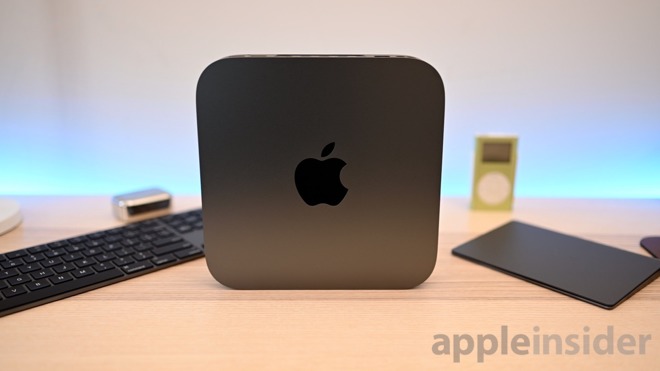

The good news is the plastic bottom still comes off easily and you can unscrew the hatch.

#Apple mac mini 2018 upgrade
But the 2014 model had its memory soldered into place so there was no way to upgrade it other than at point of sale. Two years prior, the 2012 Mac mini was easy to upgrade, one of the biggest benefits of that model. One of the criticisms of the 2014 Mac mini was its lack of upgradability.
#Apple mac mini 2018 pro
We have tested a MacBook Pro with a eGPU and found that it makes a remarkable difference though, as you can see from our Unigene Valley test, so we’d expect to see the same with the Mac mini. When it comes to graphics the fact that the Mac mini lacks a discrete GPU lets it down, as you can see from our Cinebench OpenGL test. It’s interesting to note that the 3.6GHz entry-level model comes in below it despite being ‘faster’ – we assume that the difference is attributed to the fact that the 3.6GHz Mac mini lacks Turbo Boost. In that case you will be more interested in the single-core benchmark.Īgain the 3.2GHz Mac mini performs well. If you are mainly using apps like mail, Safari, iTunes and so on then chances are you won’t benefit much from the multiple cores. So you have a choice between spending £1,449/$1,449 on a 21.5in iMac, or you could spend £799/$799 on a Mac mini and use the remaining £650/$650 for a 4K display and spec up the mini with build-to-order options. Note also that even the entry-level Mac mini is as fast as the 2017 3.4GHz quad-core Core i5 iMac. What’s interesting is that a Mac mini with the 3.2GHz processor starts at £1,069/$1,099, while you’d have to pay around £3,000/$3,000 for a 15in MacBook Pro with a 2.9GHz six-core processor. We’ll start off with multi-core test, where, as you can see, the Mac mini we tested beat the 15in 2.9GHz six-core MacBook Pro – not so surprising when you consider that our Mac mini has a 3.2GHz six-core processor. If you need more storage than that you need to choose the £1,099/$1,099 model, which ships as standard with 256GB storage but can be updated to 1TB (+£540/$600) and 2TB (+£1,260/$1,400). Monthly fee for iCloud Drive storage, or have an external drive that you work from. We’d suggest that the 128GB storage in the entry-level model is unlikely to be enough – unless you pay the That is something to consider if you are considering whether to upgrade the storage in your Mac mini. So you can expect a computer with a 1TB drive to be faster than one with a 128GB drive.

The other factor worth noting in terms of SSDs is that more storage usually means better performance and faster write speeds.

The good news is that this is great for speed, the only negative is that hard drives are cheaper per GB, so you will pay more for less space. One of the biggest changes to the Mac mini is the fact that there are no longer any hard drive or Fusion Drive options. With this option you could get a pretty powerful Mac for just £1,069. Only the Core i7 chip is Hyper-Threading enabled and it also offers a Turbo Boost to 4.6GHz. You can also choose a 3.2GHz Core i7 processor at point of purchase. This processor offers Turbo Boost so it go to 4.1GHz. This will benefit you most if you run mainly multi-core apps. That’s two more cores again, so six processors running at 3GHz compared to four at 3.6GHz. The £1,099/$1,099 Mac mini has a 3.0GHz 6-core Core i5 processor. The one thing it lacks is Turbo Boost, which would boost the processor speed when needed, as is the case with the other standard Mac mini. The 3.6GHz Core i3 quad-core processor in the £799/$799 Mac mini compares very favourably to the chip in the previous mini, with two more processing cores. Getting rid of the hard drive means Apple can fit a better processor inside the chassis (it probably could have enabled Apple to shrink the chassis too, but as we mentioned that wasn’t a requirement). 3.2GHz 6-core Core i7 with 4.6GHz turbo boost.


 0 kommentar(er)
0 kommentar(er)
